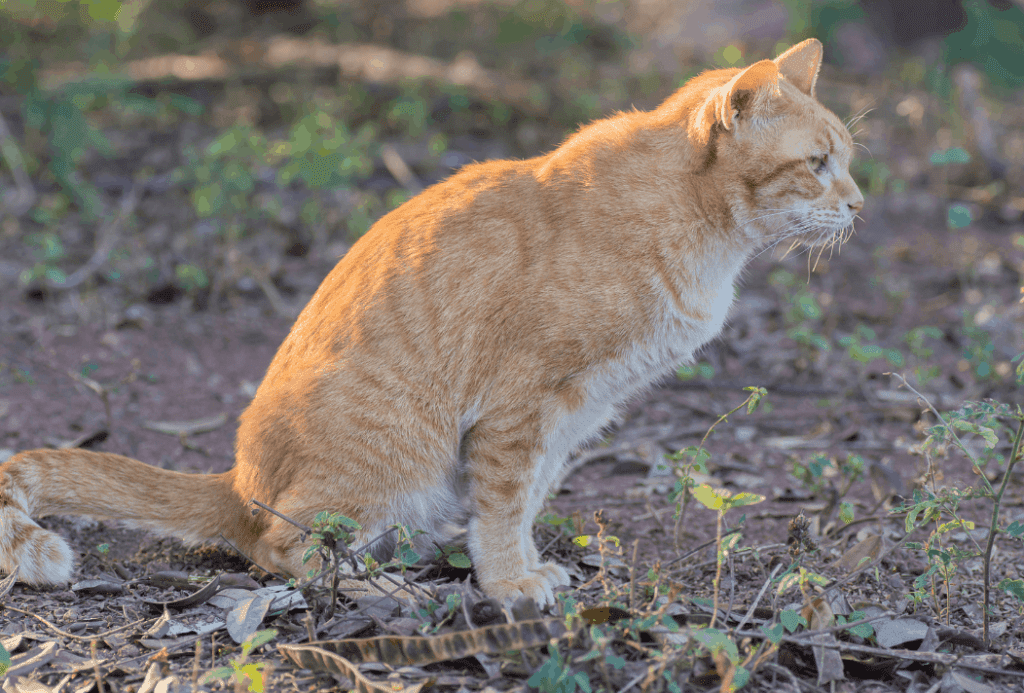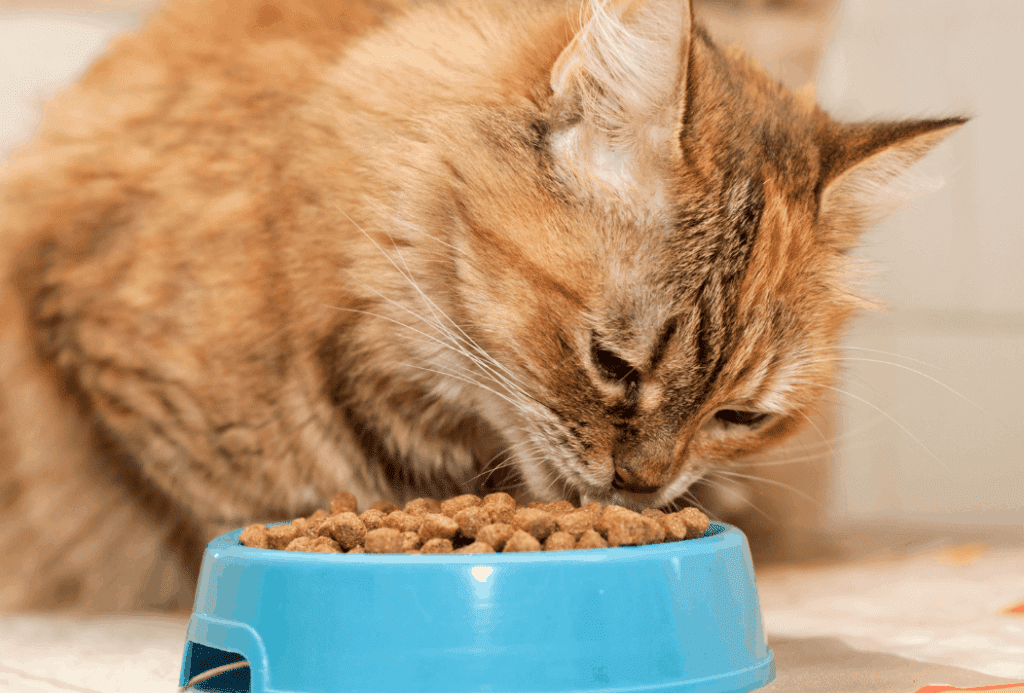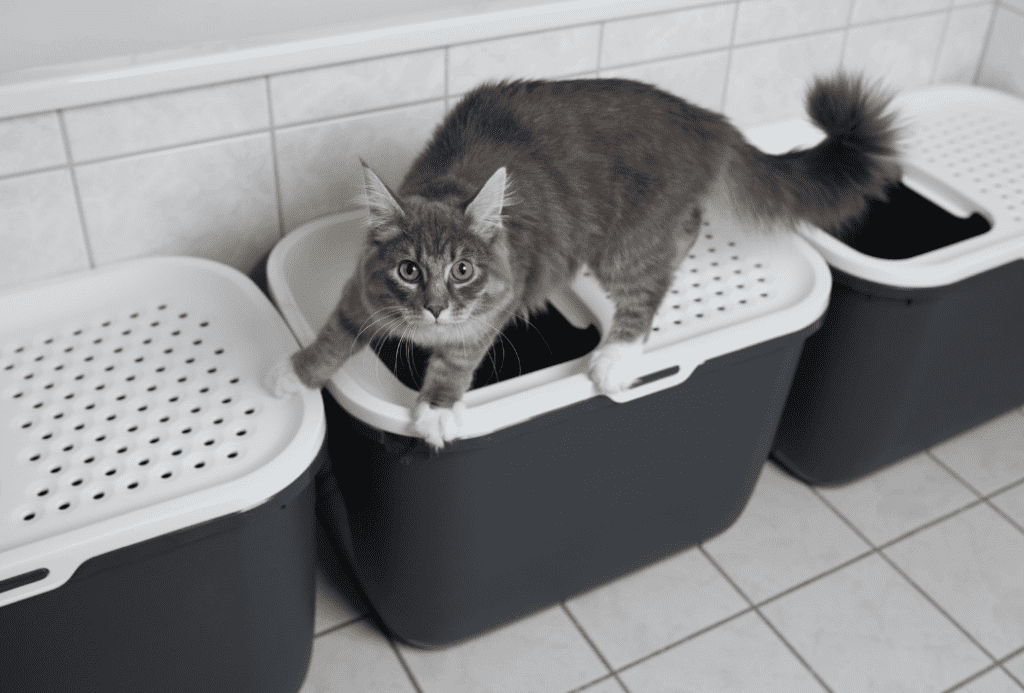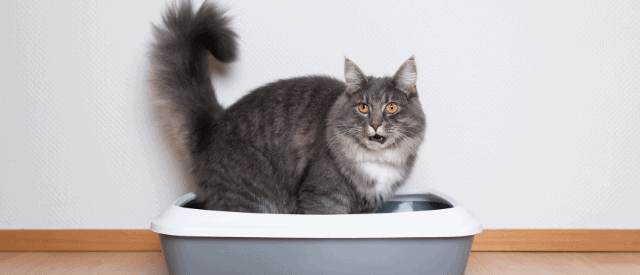Feline Lower Urinary Tract Disease (FLUTD) is an umbrella term. It’s shorthand, a way of saying the cat has difficulty peeing.
The underlying causes of FLUTD in cats
- Crystals in the urine that chafe the bladder lining
- Bladder stones
- Urinary infections
- Sterile or idiopathic cystitis that causes inflammation of the bladder lining
- Spasm of the urethra
- A plug of debris in the urethra
- Stress
- Bladder polyps
- Cancer of the urinary tract
There are certain actions an owner can take to keep your cat’s bladder healthy regardless of the reason for a cat’s pee problems: So ‘No’ it’s not always essential to find the root cause However, in some cases, ‘Yes’ it’s necessary for the vet to undertake an in-depth investigation and so that specific treatment can be started.

Symptoms of FLUTD in cats
Even though FLUTD can arise for any number of reasons, the symptoms are the same. These include:
- Pain passing urine
- More frequent attempts to pee
- Squatting in the wrong places
- Blood in the urine
- Excessive butt licking
- Behavior changes such as restlessness or grumpiness
- Straining but not passing water
If your cat shows signs of urinary discomfort, then see a vet right away
Blocked cats (those totally unable to pee) look the same as those with cystitis. However, there’s a world of difference to the outcome because left untreated, a blocked cat will go into renal failure and die.
The two conditions can only be told apart, by a vet examining the cat. This means hot-footing it to the clinic at the first sign of a cat in urinary discomfort.
For a cat with no history of urinary problems, the vet may jump right in with treatment. However, if the cat is a serial offender then the vet will want to seek out the underlying cause.
Determining the cause of FLUTD
- Urine Culture: The aim is to grow any bugs in the urine, to give a definitive answer as to whether an infection is present. This also makes for targeted antibiotic use, guaranteed to kill the bacteria.
- Urine Analysis: From the pH (how acid or alkaline the urine is) to crystals present, this troubleshoots for potential problems.
- Ultrasound Exam: Ultrasound gives a gray-scale picture of the bladder, including how thick the bladder wall is (an indicator of inflammation), and the presence of polyps, stones, or cancer.
- Radiography: Helps identify stones blocking the urethra or old fractures that could interfere with bladder function.
- Bladder Biopsy: In some cases, collecting a small sample of tissue from the bladder wall is important to reach a diagnosis.
What is the Treatment for FLUTD in Cats?
Where possible an underlying cause is found and corrected.
Minor infections and crystals
If your cat has a urinary infection then antibiotics are needed; Crystals in the urine require a diet change to dissolve them. In most cases the vet will prescribe anti-inflammatory pain relief, to make the bladder more comfortable.
Blockages
For those cats where a blockage is suspected, an urgent anesthetic is necessary to pass a urinary catheter and relieve the obstruction. The subsequent spasm and inflammation of the urethra can take several days to settle, so expect the cat to be hospitalized for a while.
Long term stress
In the longer term, if stress is suspected to be a factor, then taking steps to provide an oasis of calm within the home could reduce the frequency of flare ups.
Is your cat at risk of FLUTD?
FLUTD causes discomfort and in the most serious cases, can be life-threatening. Therefore it makes sense to identify the cats most at risk, and be proactive to keep them healthy.
First out, it has to be said that cats of any age, breed, or gender, neutered or entire, can suffer from FLUTD. However, analysis of statistics does point an accusing finger in certain directions. For example, middle-aged, desexed cats top the polls of FLUTD cases.
Also, weight is important. Overweight cats are at greater risk than their lean cousins. In part this is because they’re less active, which is another factor right there…activity levels. Lazy cats that don’t exercise are far more prone to FLUTD to felines who play or hunt. In turn, it’s an almost inevitable consequence that more indoor cats tend to suffer from FLUTD than those with the freedom to roam outdoors.

Another ‘biggie’ is diet. Cats consuming dry kibble are more likely to develop FLUTD than those eating wet food (Did you spot it? A quick fix right there, by switching from dry biscuit to canned food?)
How can I reduce the risk of FLUTD in my cat?
Anyone whose cat has endured the misery of FLUTD will be keen to prevent it happening again. Since stress is a factor, making the home as feline-friendly as possible is important.
Get the ratio of cats to litter trays right
Simple things can make all the difference, such as having multiple litter boxes in a multi-cat household. The rule is: One tray per cat plus one spare. Three cats mean four trays etc.
But more than that, the trays should not be lined up in a row, but separate around the home. And each one needs to be in a private location where the cat feels safe to toilet undisturbed.

Try food supplements and pheromone products
If yours is a stressy, anxious cat then try plugging in a Feliway diffuser near her bed. This gives off a synthetic cat pheromone that helps her feel chilled and reassured. For the super-stressy cat consider food supplements such as Zylkene, which have a naturally calming effect.
Increase your cats intake of wet food vs dry kibble
And don’t forget what we said about canned food. Upping the water intake of your cat by feeding moist feed and providing a cat drinking fountain can make all the difference. And a fountain is certainly cheaper than repeated trips to the vet!
If your cat shows sign of FLUTD, get them to the vet
And finally, know that FLUTD is an umbrella term, with many causes. If your cat shows signs of urinary discomfort safeguard your cat’s well-being and always seek urgent veterinary attention.









